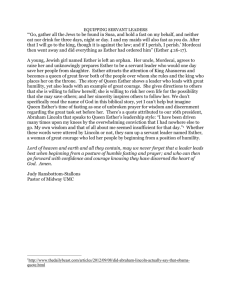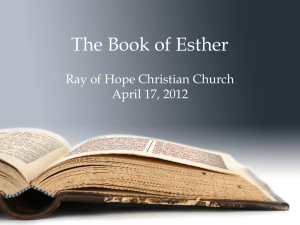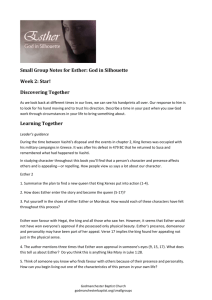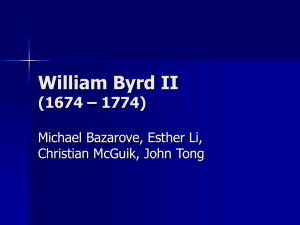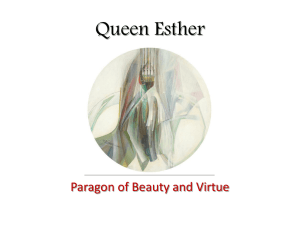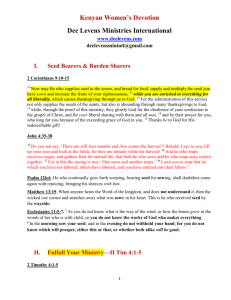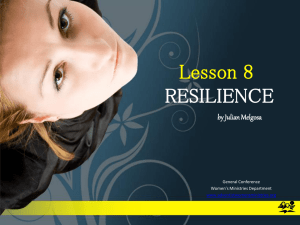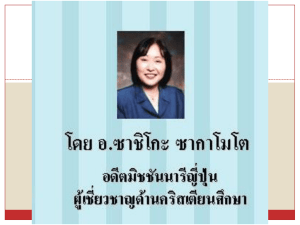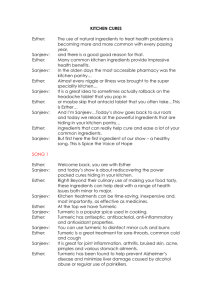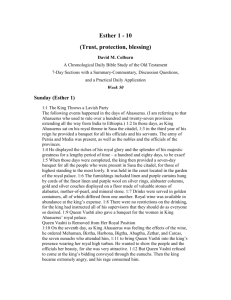ESTHER Alliance
advertisement
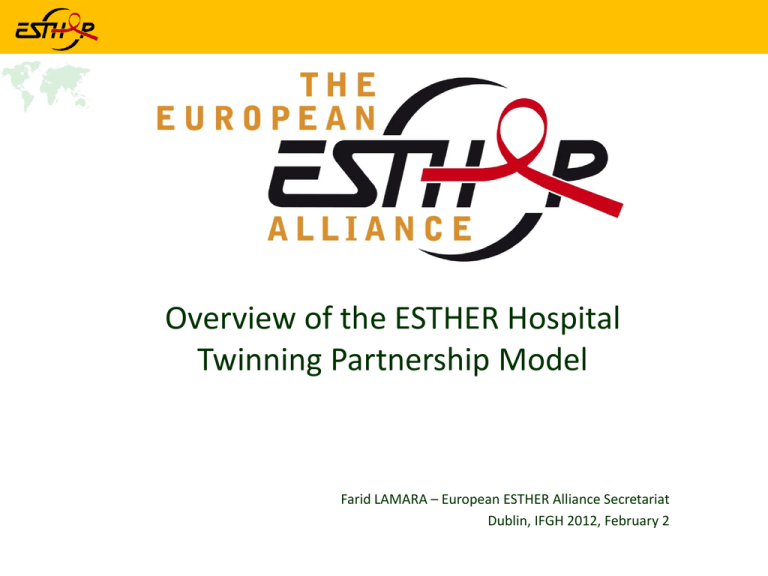
Overview of the ESTHER Hospital Twinning Partnership Model Farid LAMARA – European ESTHER Alliance Secretariat Dublin, IFGH 2012, February 2 I - ESTHER Background, Evolutions and Modus Operandi Background • “Together for a Networked Hospital therapeutic Solidarity” • Launched by MoH and MFA • Part of the French bilateral Development Cooperation in Health •North and South hospitals twinning partnerships •GIP ESTHER set up in 2002 3 European ESTHER Alliance 12 member States • 2002: France, Italy, Luxembourg, Spain • 2004: Austria, Belgium, Germany, Portugal • 2006: Greece • 2008: Norway • 2011: Switzerland • 2012: Ireland Secretariat in Paris Background • ESTHER Initial mandate (2002): Capacity building for quality care, treatment and support of PLWHIV/Aids and related diseases North/South Coop. and Exchanges (hospital partnerships) Training on site and in European hospitals, lab equipments (including CD4 and other machines), ARV buffer stock, drugs for Ois Project approach: Site to site partnerships through hospital twinnings and CSOs partnerships, in agreement with national authorities EVOLUTIONS • Situation in 2012 Health focus far beyond HIV/AIDS and associated diseases: hygiene, patient and professional safety, MCH, operational research, handicap, blood bank... Various modes of action: multi-level partnerships strategy (hospitals, research centers, CSOs, IOs etc.), TA, E-learning, South/South partnerships, advocacy and Communication. Partnerships activities focus: training on site and in European hospitals, OR, M&E, Psychosocial Support (PSC), specific programs (MARPs: prisoners, IDUs, MSM ; PMTCT). HSS approach: Decentralization of Care, National health policies, M&E, DPSM, HRH Capacity building (Task Shifting for Paramedics), lab Capacity Dev., PMTCT integration in reproductive health etc. ESTHER Model hospital twinning partnership as the main pillar for ESTHER programs Additional & complementary approaches for comprehensive care and health system strengthening Integration in the national health strategies II – ESTHER Networks and Geographic Coverage Two examples 50 French hospitals mobilised 2011 : mobilization of the Caribbean Hospitals involved in the ESTHER programme 9 19 country partners Morocco Asia Mali Senegal Liberia Cambodia Laos Vietnam Niger Burkina Faso Benin Ghana Cote Togo d’Ivoire Cameroon Chad Central African Republic Africa Gabon Burundi 2011 : Haïti End 2010 166 hospital partners 142 CSOs partners 10 10 Spanish hospitals mobilised 7 partner countries 49 sites supported 2002 to 2011 : more than 40 country partners South-East Europe: Albania Middle East: Syria Latin America: -Colombia -Costa Rica -Ecuador -Guatemala -Honduras -Nicaragua -El Salvador Asia: -Cambodia -Laos -Nepal -India -Vietnam Africa: Benin, Burkina Faso, Burundi, Cameroon, Chad, Côte d’Ivoire, Ethiopia, Gabon, Ghana, Guinea Bissau, Lesotho, Liberia, Malawi, Mali, Morocco, Niger, Nigeria, Republic of Central Africa, Democratic Republic of Congo, Rwanda, Senegal, Soudan, South Africa, Tanzania, Togo, Uganda. Portuguese speaking countries in progress (Capo Verde, Angola). Some figures (period 2002–2011) • More than 120 hospital twinning partnerships • 270 Health facilities beneficiaries • 40.000 professionals trained III - ESTHER contribution to face Health Human Resources Crisis in country partners Some Figures and Outcomes from the ESTHER France experience CAPACITY BUILDING / TRAINING 4038 Health Professionals Trained in 2010 (more than 25.000 from 2002 to 2010) Number of people trained by country partners 15 Training beneficiaries - 2010 Capacity Building Areas - 2010 Thematic repartition Workshops and Mentorships Missions Prise en charge Biologie Accompagnement psychosocial PTME - Pédiatrie Hygiène hospitalière et AES 17 IV - ESTHER Twinning Partnerships Model Lessons Learnt and Conclusions ESTHER Model: Lessons Learnt and Conclusions • ESTHER twinning partnerships enable Sustainable Development of HRH • ESTHER twinning partnerships enable capacity building programs implementation combining MDGs 4, 5 and 6 • ESTHER Model adapted for HSS interventions • Quality of partnership key for success • EEA Charter for QoP as a guiding document for technical partners to implement quality interventions and increase their impact Quality of Partnership • Principles based on the following 8 AXES Adherence to national policies and strategies Agreement between partner institutions Reciprocity Joint and Equal Responsibility Capability Equity and Respect Transparency Ethics THANK YOU www.esther.eu European ESTHER Alliance Secretariat farid.lamara@esther.fr
